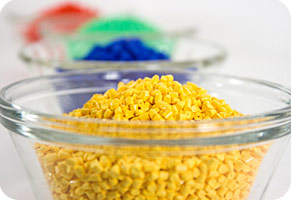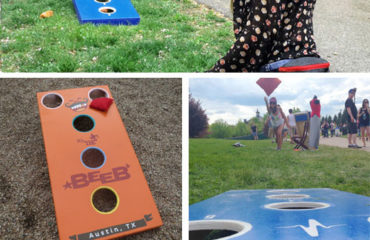Cornhole Bag Filling
What Makes the Best Filling Material for Cornhole Bags?
In some parts of the country, cornhole goes by the name of bags or baggo. This references one of the crucial elements of the game: the bags!
However, in cornhole, not just any bag will do. Cornhole players tend to prefer one of two materials: either actual corn or plastic pellets.
Which One is Better?
Neither option is “better” for cornhole bag filling as the choice just boils down to personal preference. But before you can buy cornhole bags, you definitely need to decide between corn or plastic pellets.
Let’s take a look at the pros and cons of corn versus plastic pellet filling material for cornhole bags.
Corn Filling
 Die-hard corn-filled-bag fans are always quick to point out that the name of the game is CORNhole. They think the only filling should, naturally, be corn. The game originated with corn as the cornhole bag filling and the tradition continues among many players today.
Die-hard corn-filled-bag fans are always quick to point out that the name of the game is CORNhole. They think the only filling should, naturally, be corn. The game originated with corn as the cornhole bag filling and the tradition continues among many players today.
A benefit of the corn filling is that bags must be broken in, which is a process that many players enjoy as they get to know a new cornhole set.
The saying “dust is a must” describes how many players feel about the importance of having bags filled with corn. As the corn in the bags breaks down, it emits a fine dust that affects game play. Fans of corn-filled bags find that the dust helps the bags slide slightly on cornhole game boards and play better overall. The dust offers an authentic cornhole experience, according to some.
On the other hand, corn is a natural material and is therefore more susceptible to decay. If the bag gets dirty, it is nearly impossible to clean because wet corn-filled bags mold easily.
This also means that you cannot leave your bags out in the rain or in the dew overnight. The dampness will quickly ruin your bags.
Similarly, critters may be attracted to corn-filled bags. For this reason you should store your bags in air-tight containers when not in use to protect them from animals and the elements.
Pellet Filling
 Using plastic pellets as cornhole bag filling is another viable option.
Using plastic pellets as cornhole bag filling is another viable option.
Unlike corn, plastic pellets do not break down, mold, or attract critters if neglected. Bags filled with plastic pellets are easy to clean if dirty and can be dried quickly by laying them flat in the sun.
If you plan on holding an annual cornhole event–such as a charity cornhole tournament–plastic pellets may be the way to go. They require little attention to keep them lasting year after year.
In game play, plastic pellet bags play differently than corn-filled bags. While corn-filled bags slide in their dust, plastic pellet bags are more likely to bounce (they don’t slide as much). Using bags with a different material requires players to adjust their technique slightly to account for the difference.
While corn-filled bags need to be broken in and thus acquire personality, the same is not true of plastic pellet-filled bags. The tradeoff of personality is durability, so the choice depends on your preferences and your willingness to take care of your cornhole investment.
The debate will continue about the best filling material for cornhole bags. These are the main arguments on both sides, so let your own preferences determine which material is better for your purposes.
When you purchase cornhole bags from Custom Corntoss, you have the option to select either corn or pellets. Fortunately, we can please everyone—no matter what camp you are in! And if you change your mind later on, you can always come back and try the other option.

